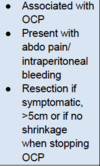Histopathology (All Topics) Flashcards
(452 cards)
Cardiac Pathology:
What is the definition of atherosclerosis?

Cardiac Pathology:
What are the steps in atherogenesis?

Cardiac Pathology:
What are the 3 principal components of atherosclerotic plaques?

Cardiac Pathology:
Which blood vessels are more commonly affected?
How are they affected?

Cardiac Pathology:
What are the modifiable and non-modifiable risk factors for atherosclerosis?

Myocardial Infarction:
What is the pathogenesis of Myocardial Infarction?

Myocardial Infarction:
What are the mechanical complications of Myocardial Infarction?

Myocardial Infarction:
What are the arrhythmia caused by Myocardial Infarction?

Myocardial Infarction:
What are the pericardial complications of Myocardial Infarction?

Myocardial Infarction:
What is the evolution of Myocardial Infarction Histological findings?

Heart failure:
What are the common causes of Heart Failure?

Heart failure:
What are the complications of Heart Failure?

Heart failure:
What is the pathophysiology of Heart Failure?

Heart failure:
What does left Ventricular Failure cause?

Heart failure:
What does Right Ventricular Failure cause?

Heart failure:
What is the definition, common phenotype and histological findings of Hypertrophic Cardiomyopathy?

Heart failure:
What are the genetic defects in Hypertrophic Cardiomyopathy?

Heart failure:
What effect can Hypertrophic Cardiomyopathy in young people?
What is Hypertrophic Obstructive Cardiomyopathy and what are its effects?

Cardiomyopathy:
What is/are the mechanism, causes and indirect myocardial dysfunction of Dilated cardiomyopathy?

Cardiomyopathy:
What is/are the mechanism, causes and indirect myocardial dysfunction of Hypertrophic cardiomyopathy?

Cardiomyopathy:
What is/are the mechanism, causes and indirect myocardial dysfunction of Restrictive cardiomyopathy?

Myocardial Infarction:
What is a Mural Thrombus?

Cardiomyopathy
What is Arrythmogenic Right Ventricular Cardiomyopathy (ARVC)?

Acute Rheumatic Fever:
What is the peak age of Rheumatic Fever?
What are its effects on:
- Heart
- Joints
- Skin
- CNS






























































































































































































































































































































































































































